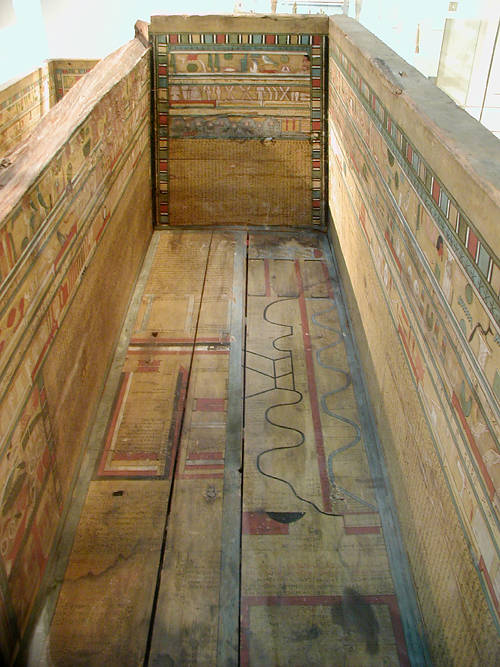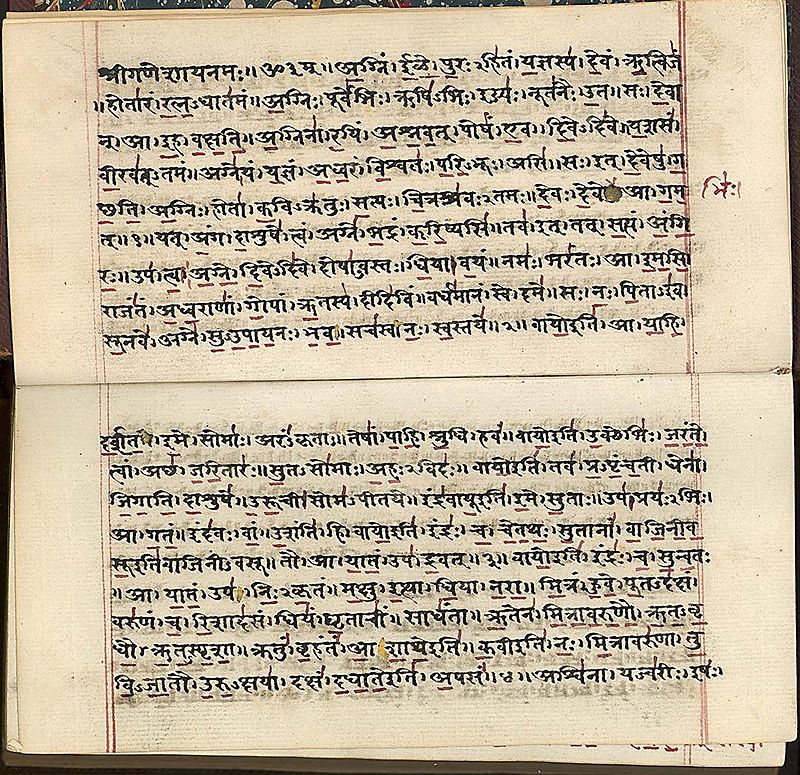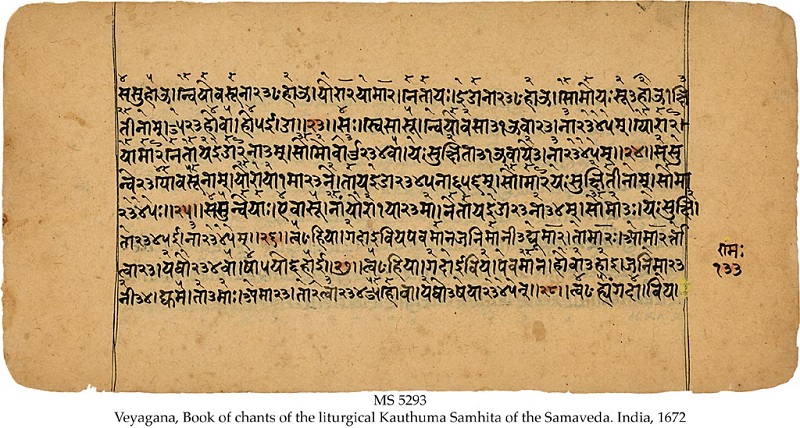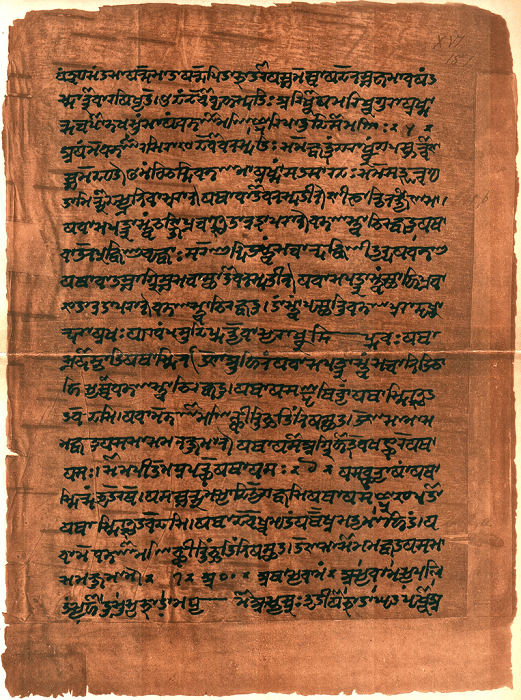Religion has been around for as long as man has existed. While it certainly has evolved over the years, the belief in gods and deities is an ancient tradition and dates back thousands of years. The proof of many of these religions are seen in religious texts discovered by experts and specialists. Here are ten of the world’s oldest religious texts.
10. Kesh Temple Hymn
Written: Circa 2600 BC
Location: Sumer
Discovered: 1909
Religion: Various polytheistic beliefs

The Kesh Temple Hymn is one of the oldest surviving pieces of literature in the world. It is often also known as the “Liturgy to Nintud” or “Liturgy to Nintud on the Creation of Man and Woman”.
The first discovered tablets that were a part of this work were found during the excavations of a library temple in Nippur, the most ancient Sumerian city which focused on the worship of the gods Enlil and Nenlil, who Sumerians believed created all things.
The hymn consists of 134 lines, originally split into eight different houses, each ending with a unique rhetorical question.
9. Pyramid Texts
Written: Circa 2400–2300 BC
Location: Ancient Egypt
Discovered: 1881
Religion: Various polytheistic beliefs

The Pyramid Texts are known as one of the oldest religious texts in the world. During the 5th or 6th Dynasties of the Old Kingdom in Ancient Egypt, the text was carved on to the walls and within the sarcophagi of the Saqqara pyramids. These texts were meant to be for the pharaoh and were reserved for him.
The text of this religious script had to do with the protocol of dealing with the pharaoh’s body after his death, including how to protect his remains and ensure his reanimation after his passing, which would allow him to carry on to the afterlife and ascend to heaven.
These ways were known as “utterances” or spells and could be used to ask for the help of the gods and even punish or threaten gods who decided not to lend their help.
8. The Coffin Texts
Written: Circa 2100 BC
Location: Ancient Egypt
Discovered: Late 1800s
Religion: Various polytheistic beliefs

Much like the Pyramid Texts, the Coffin Texts are a collection of funerary works consisting of 1,815 spells to help bring the deceased to the afterlife safely and to protect them from danger in their journey. No longer reserved for pharaohs, anyone who could afford to be buried in a coffin could have access to parts of the text.
Due to often being written on the interior of coffins, the Coffin Texts’ spells were often shortened or simplified. More complex, full versions were found in later works that it inspired, such as the Book of the Dead, which we’ll discuss a little later in this article.
The Coffin Texts mainly focus on and describe the afterlife governed by the god Osiris. One of the most important books out of this collection of texts is the Book of Two Ways, which is the first text found that maps out the Ancient Egyptian idea of the underworld.
7. The Epic of Gilgamesh
Written: Circa 2100 BC
Location: Mesopotamia
Discovered: 1853
Religion: Various polytheistic beliefs

Thought it is more of an epic story than a religious text, the Epic of Gilgamesh is often cited as a piece of holy literature. In fact, it is widely considered the earliest great literary work. This great tale tells the story of Gilgamesh, the king of Uruk.
The very first parts of this story, including five Sumerian poems, were written first, then combined with future works to create one large epic. The oldest surviving completed compilation of the completed work is dated to the 18th century BC and is widely known as the Old Babylonian version, which was subtitled Shūtur eli sharrī, which translates to “Surpassing All Other Kings”.
The cumulation of the story involves Gilgamesh discovering, after years of dangerous and exhausting travel to discover the secret of eternal life, that “Life, which you look for, you will never find. For when the gods created man, they let death be his share, and life withheld in their own hands.”
6. The Rigveda
Written: Circa 1700 BC
Location: India
Discovered: N/A
Religion: Hinduism

Directly translating as “Praise Knowledge”, the Rigveda is one of the four canonical Hindu sacred texts that collectively make up the Vedas. It is, essentially, a collection of over 1,000 hymns that contain a total of 10,600 verses.
The massive amount of hymns in the Rigveda are arranged into ten books known as Mandalas, with the hymns shortening in length but increasing in number across each book. The first eight books written focused more on worship towards Rigvedan gods, but the final two books bordered on philosophical and discussed charity and morality.
Unfortunately, much of the language used in the Rigveda is obscure and as a result, many parts of it remain untranslated till this day. It remains one of the oldest discovered Indo-European extant texts, and today is one of the oldest religious texts still in use.
5. The Book of the Dead
Written: Circa 1550 BC
Location: Egyptian
Discovered: Middle Ages
Religion: Various polytheistic beliefs

The Book of the Dead isn’t exactly a book — it is a large amount of texts compiled. This funerary text describes a list of spells that can be used by individuals to make their journey from the underworld to the afterlife. There are some alternate translations of the title of this work, including the “Book of Coming Forth by Day” and the “Book of Emerging Forth into the Light”.
The book was placed into the coffin or burial chamber of those who had passed away, with its contents derived from years and years of spells written by many different priests. The earliest spells are taken from the aforementioned Pyramid and Coffin texts.
Written on papyrus with hieroglyphic or hieratic script, no canonical version of the Book of the Dead exists due to the countless variations discovered over the years. Knowledge of the existence of this holy text was present since the Middle Ages, so it’s not possible to accurately say when it was discovered, and by who.
4. The Instruction of Amenemope
Written: Circa 1300 BC
Location: Egyptian
Discovered: 1888
Religion: Various polytheistic beliefs

While it isn’t exactly an extremely religious text, we’re including the Instruction of Amenemope is often credited for its strong resemblance and relationship to the Bible’s Book of Proverbs. On top of that, it is often considered a masterpiece and an essential part of wisdom literature.
The text consists of a whopping thirty chapters of advice written by a scribe named Amenemope to pass on to his son and provide him with wisdom on how to live a successful life. It discusses values and attitudes needed in order to live happily despite the increasing social and economic difficulties in the world.
The format of the Instruction of Amenemope somewhat resembles that of an earlier, non-religious ancient text called The Maxims of Ptahhotep.
3. The Samaveda
Written: Circa 1200 BC
Location: India
Discovered: N/A
Religion: Hindu

The last three entries on this list are the other three texts in the Vedas apart from the aforementioned Rigveda. Literally translating to “song knowledge”, the Samaveda contains chants and speaks of melodies, comprising of 1,875 verses that are mainly derived from the Rigveda.
Some parts of the Samaveda are believed to date back to the Rigveda period, but the first version of the Samaveda used today surfaced around 1200 BC. This text contains two primary Upanishads, which are essential pillars of Hinduism.
Many traditional Indian dances are said to have their roots in the contents of the Samaveda, which is fitting since the Samaveda is officially considered the Veda of Chants.
2. The Yajurveda
Written: Circa 1200 BC
Location: India
Discovered: N/A
Religion: Hindu

The title of this text, Yajurveda, literally translates to “prose mantra knowledge”, and as such, this Veda is the Veda of prose chants. It essentially is comprised of ritual chants and formulas and is divided into two.
One part of the text is the Krishna (black) section, which contains verses that are not well arranged. The other part is the Shukla (white) section, which has a much better structure. Four of the former’s recensions and two of the latter’s recensions continue to be used today.
The Yajurveda contains 1,875 verses which, while unique, are based on the foundation built by the Rigveda. The text also holds the largest collection of primary Upanishads.
1. The Atharvaveda
Written: Circa 1200 BC
Location: India
Discovered: N/A
Religion: Hindu

The Athraveda is the oldest religious text in the world and dates to around 1200 BC.
Unlike the other parts of the Vedas, the Atharvaveda has a more complex translation: “knowledge storehouse of atharvāṇas, the procedures for everyday life”. The texts is divided into 20 books which share 6,000 mantras and 730 hymns between them.
Some parts of the Atharvaveda discuss ancient medicine and medicals procedures, providing some of the earliest evidence and record of religious medical practices.
There are two versions of this religious text that made it into the modern world: the Paippalāda and the Śaunakīya. Like the other Vedas, it continues to have an impact on Hinduism today.
OTHER POSTS YOU MAY BE INTERESTED IN












The Dead Sea scrolls are older than most on your list
False the Dead Sea schools are not older than any of the text on the list.
The origin of the Dead Sea Scrolls, which were written between 150 B.C. and 70 A.D., remains the subject of scholarly debate to this day. According to the prevailing theory, they are the work of a Jewish population that inhabited Qumran until Roman troops destroyed the settlement around 70 A.D.
The Atharvaveda Is 1200 B.C. And Dead Sea only 150 B.C.
Sorry the Dead Sea scrolls were plagiarized off of older religions.
Noah’s flood is dated to be about 2400 BC approximately.
The Epic of Gilgamesh is dated around 2700 BC
BOTH a tale of a great flood . The Gilgamesh flood often used by non believers to say that’s where Noah’s flood came from. However, I believe it’s vica-versa